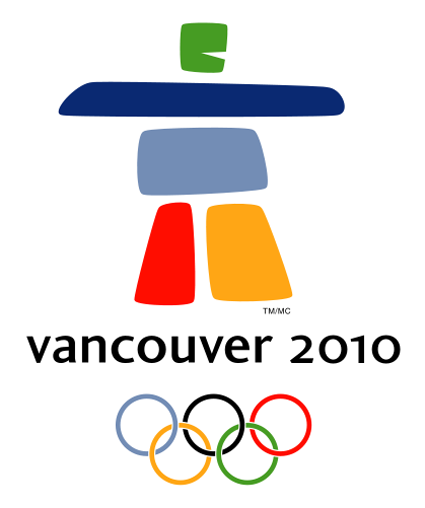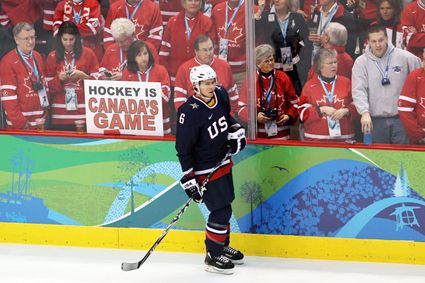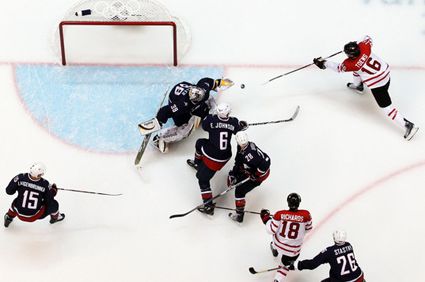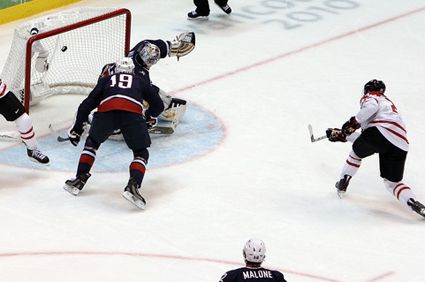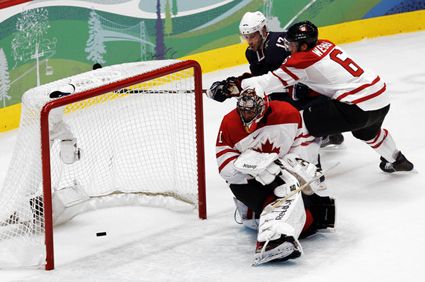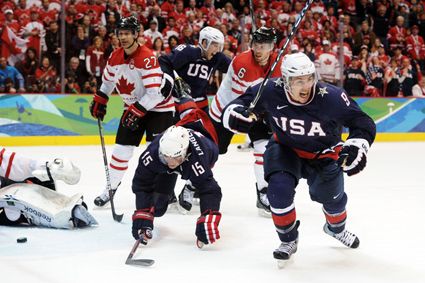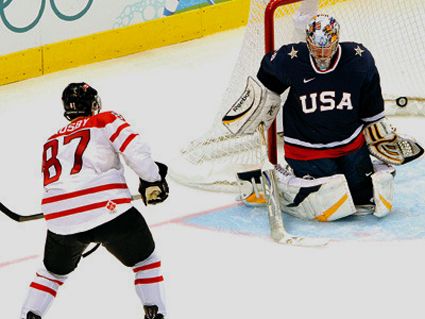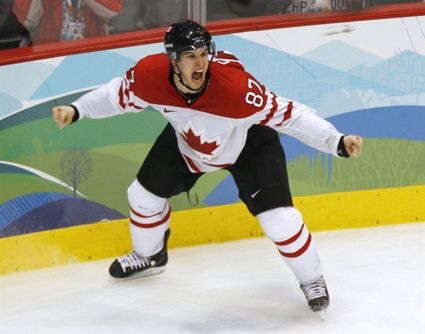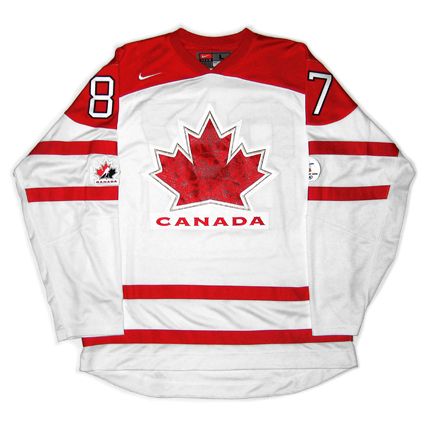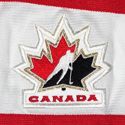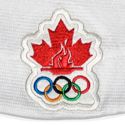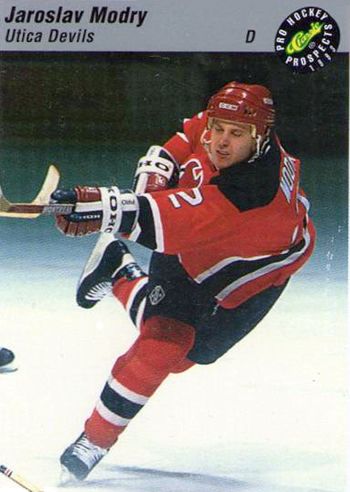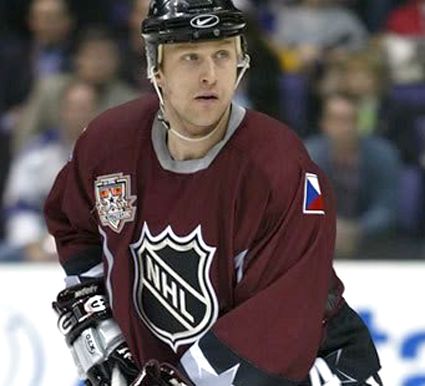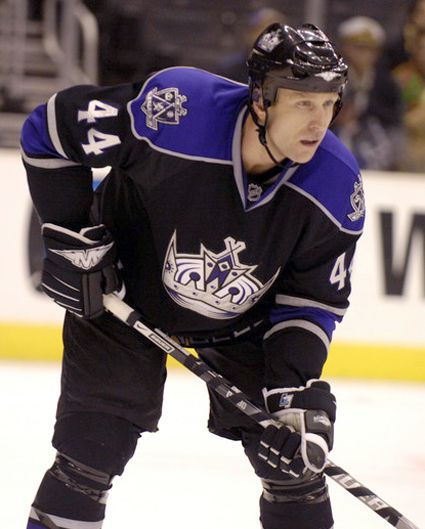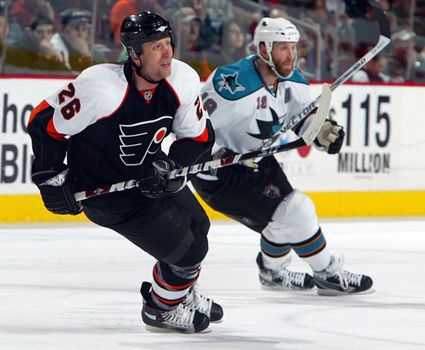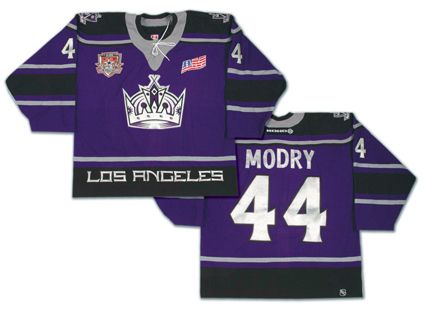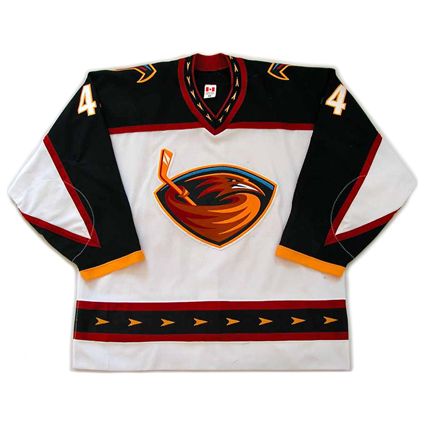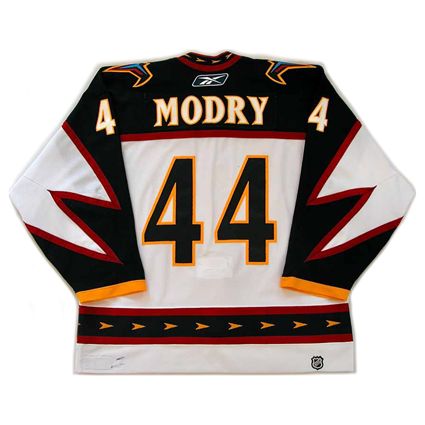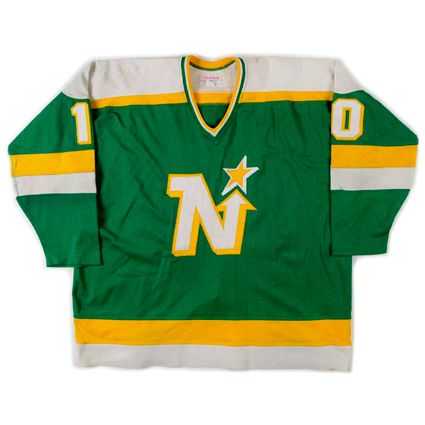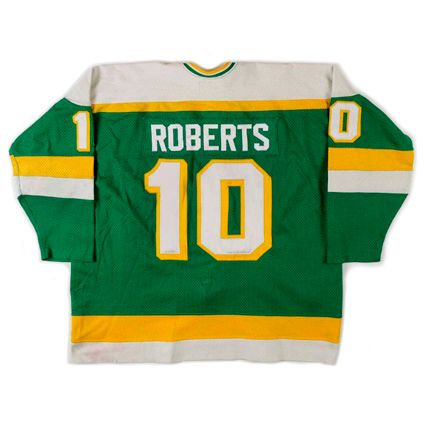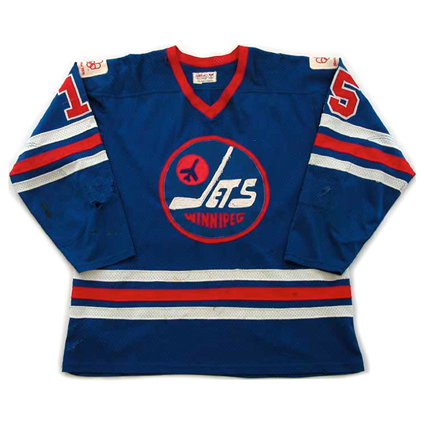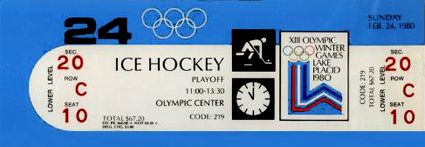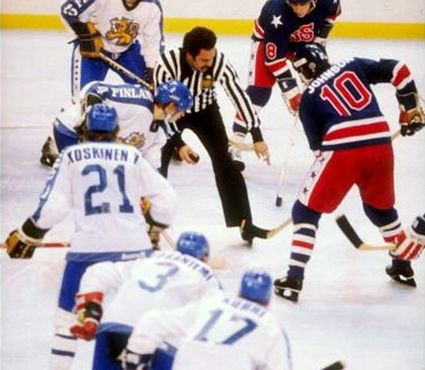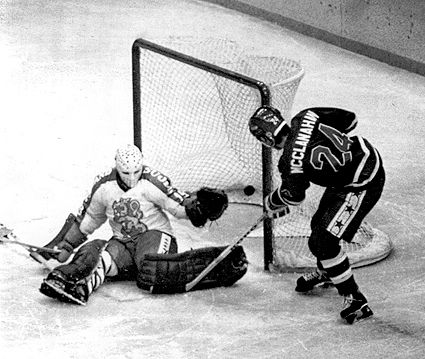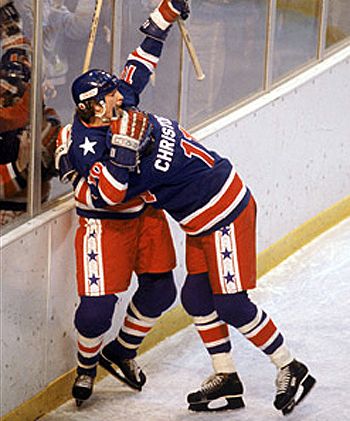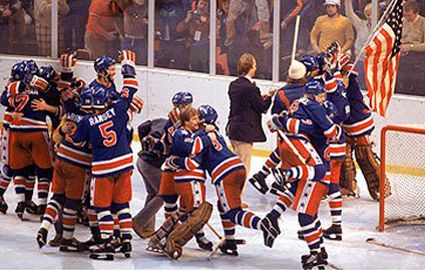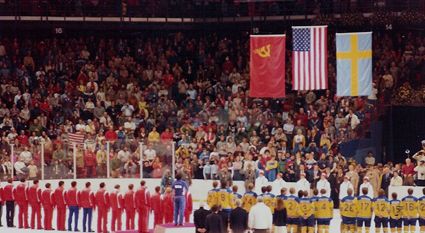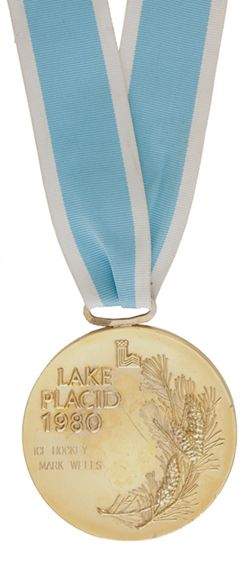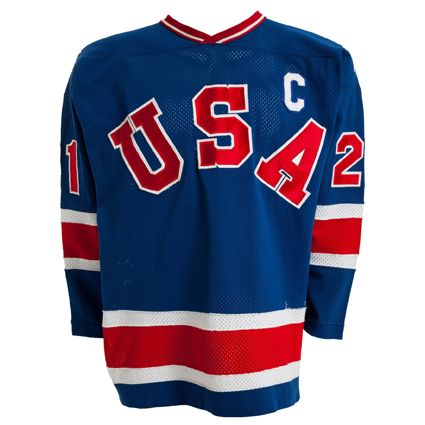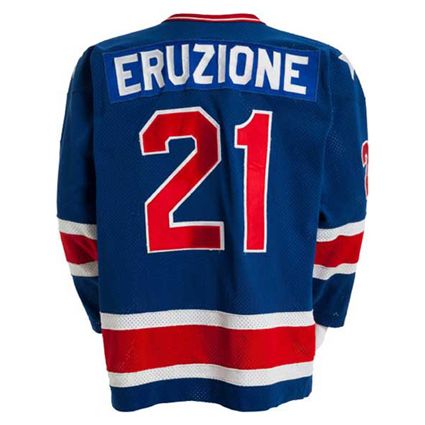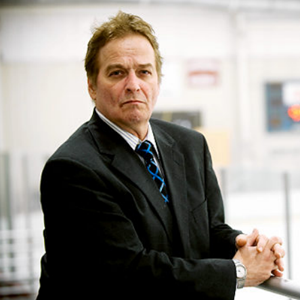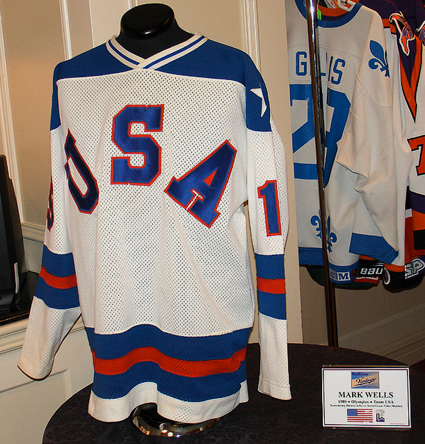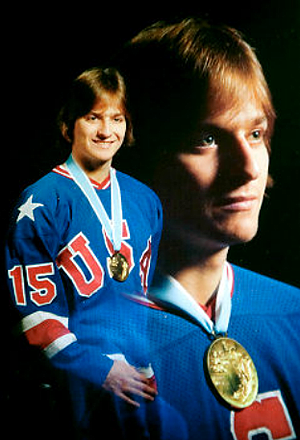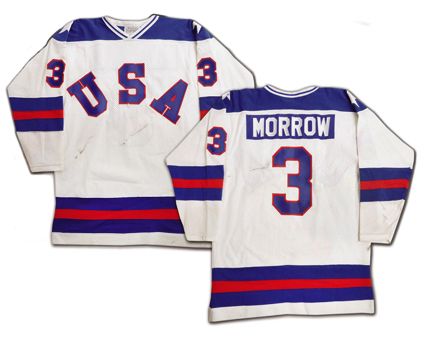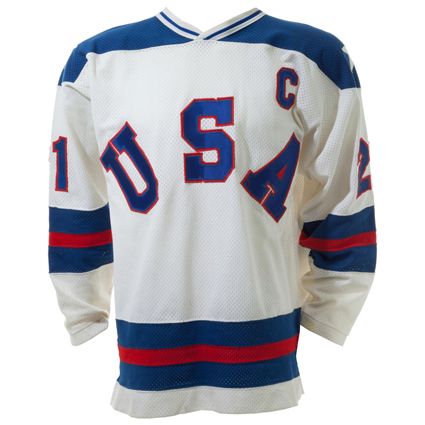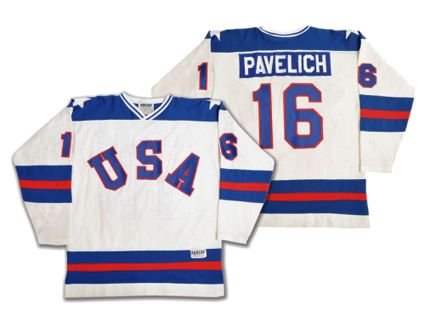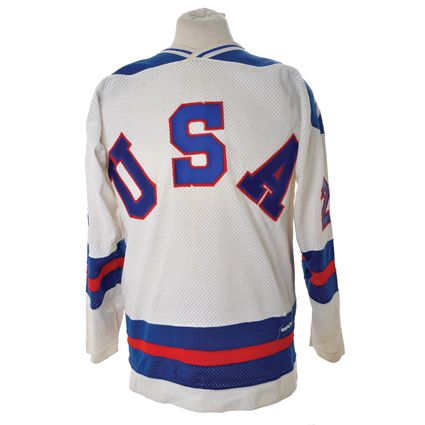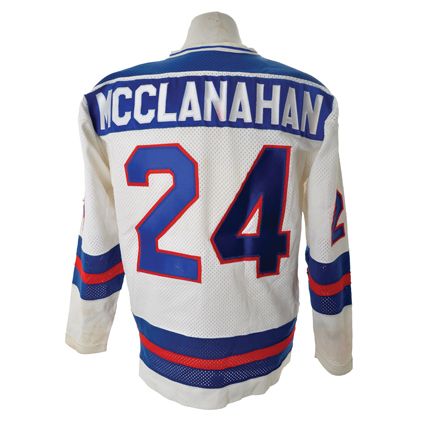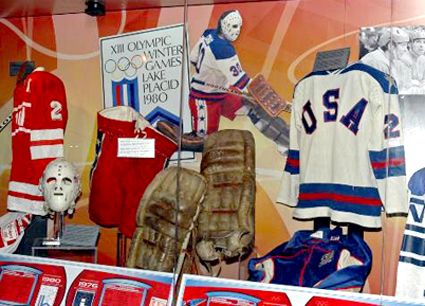gives the US hope of stealing the gold
Saturday, February 28, 2015
2010 Team Canada Sidney Crosby Jersey
After their failure to medal at the 2006 Olympics, there could not have been more pressure on Canada to win gold as hosts of the 2010 Olympics in Vancouver.
The 12 teams in the tournament were divided into three groups of four teams each based on their IIHF World Rankings. Following the completion of group play, the group winners, plus the fourth ranked team, were given byes into the quarterfinals where they would await the winners of elimination games among the eight remaining teams.
Group A was won by the United States following an exciting 5-3 win for the Americans what was in doubt until the final minute before an empty net goal provided the final margin.
Hard fought Group B belonged to Russia while defending gold medalists Sweden went undefeated in Group C. Finland advanced as the fourth ranked team with 6 points in their group, the same as the Czech Republic, but earned the bye thanks to a better goal differential thanks to big wins over Belarus and Germany.
In the Elimination Round, Switzerland defeated Belarus 3-2 in overtime, the Czech Republic downed feisty Latvia 3-2, also in overtime, Slovakia beat plucky Norway 4-3 and Canada dominated Germany 8-2.
The Quarterfinals had the United States advancing with a 2-0 win over the Swiss, Finland shutout the Czechs 2-0, Slovakia upset Sweden 4-3 to end their hopes of a repeat and Canada dominated Russia 7-3.
The Semifinals paired the United States with Finland and Canada and Slovakia. In the first game, the United States streaked out to a shocking 6-0 lead a little over half way through the first period on their way to a 6-1 win and a place in the final.
Canada got two first period goals by Patrick Marleau and Brendan Morrow and then at 16:54 of the second period Ryan Getzlaf's goal gave the Canadians a 3-0 lead, which was enough to defeat the Slovaks, who scored two goals three and a half minutes apart midway through the third period to make for a tense finish. Canada was able to hold on to earn a rematch with the United States in the final with gold on the line at home and on an NHL sized ice sheet.
The dream matchup between the two North American rivals was a tense affair with both teams getting their chances to score until Jonathan Toews beat US goalie Ryan Miller on the short side to take a 1-0 lead at 12:50 of the first, the only goal of the period and the first time the United States had trailed in a game the entire tournament.
Jonathan Toews opens the scoring for Canada
The second period was more of the same, with hard hits, great saves and little scoring as the tension in the arena rose. Finally Corey Perry coming down the slot fired a loose puck past Miller for a 2-0 Canadian lead at 7:13.
Corey Perry puts Canada up by two
The Americans responded with a goal from Ryan Kesler that squeaked between Roberto Lunogo's body and arm at 12:44. The remainder of the second period was played even, as the shots on goal finished at 15-15.
Ryan Kesler's goal gets the US on the board
Again, the third period wore on as the two teams punched and counterpunched, yet both failed to yield a goal. With no penalties called, waiting for a power play proved futile. With time running out and desperation setting in, the United States pulled Miller from their goal with 1:27 remaining for an extra attacker. With time now running out on the Americans, Patrick Kane hurled the puck at the Vancouver goal. It bounced off of Lunongo and was banged in by Zach Parise with 25 seconds remaining to send the game into overtime.
Parise's late goal puts the party on hold and
gives the US hope of stealing the gold
gives the US hope of stealing the gold
After seven minutes of play, during which many hoped someone, anyone, would score as to avoid having the gold medal decided by a shootout, Canada was leading 6-4 in shots, Jarome Iginla passed the puck off the boards to Sidney Crosby, who had a clear path to the goal. He took a few strides before shooting the puck, which went under Miller's pads before he could close the gap, ending one of the most memorable games in the history of the sport.
Crosby beats Miller to win gold
The goal sent the arena, and all of Canada, into a delirious celebration.
Crosby begins the celebration of his golden goal
The gold medal was the eighth for Canada and their second in three tries after a 50 year drought.
Canada poses for a team picture after receiving their gold medals
Today's featured jersey is a 2010 Team Canada Sidney Crosby jersey as worn during the gold medal final in which Crosby scored the gold medal winning goal in overtime. Crosby had worn the assistant captain's "A" earlier in the tournament but for the final it was worn by Iginla and Chris Pronger.
With the ruling that countries could not carry the logos of their national organizations as their main crest, the usual Hockey Canada logo was replaced by a maple leaf which contained an intricate design full of symbols of Canadian culture and heritage, including an eagle, thunderbird, moose, beaver, maple leafs representing past gold medals and fleur-de-lis as well as a hockey player.
This jersey was a big improvement over the Nike Swift jerseys introduced in 2006 where each team wore essentially the exact same jersey only with their countries colors changed. By 2010, the designs began to diverge, with each country having it's own unique designs once again, although with certain elements shared, which is natural when they all come from the same source.
This jersey is adorned with several logos, including the Vancouver 2010 Olympic logo on the left sleeve, the controversial Hockey Canada logo on the right sleeve and finally the Canadian Olympic Committee logo on the bottom right of the back of the jersey in the location formerly occupied by the IIHF logo.
Today's video selections begin with the Top 10 plays of the tournament, followed by highlights from the gold medal final.
Labels:
2010 Olympics,
Canada,
Crosby Sidney
Friday, February 27, 2015
2001-02 Los Angeles Kings Jaroslav Modry Jersey
Another example of a player being born at the right time, defenseman Jaroslav Modry was born on this date in 1971 in Czechoslvakia. He began his hockey career with his hometown HC Ceske Budejovice as a 16 year old with three games during the 1987-88 season. A defensive defenseman, Modry would play 28 games of the 1988-89 season, being credited with a lone assist. He would become a regular in 1989-90 with 41 games, which included finding the net for the first time with a pair of goals on his way to four total points.
Following the season, the New Jersey Devils of the NHL drafted Modry 179th overall in the middle of the ninth round, a testament to the timing of his birth, as Czechoslovak hockey players were now being allowed to leave for the NHL without having to defect from behind the Iron Curtain any longer.
For the 1990-91 season Modry would join HC Dukla Trencin, scoring a goal and 9 assists in 33 games. He also would make his only international appearance for Czechoslovakia at the 1991 World Junior Championship, earning a bronze medal.
In 1991-92, Modry would split the season between Dukla Trencin with 18 games in the First Ice Hockey League and 14 games withh his original club, Ceske Budejovice, who by then had been relegated to the Czech second division. Modry would tally 4 goals and 14 points as Budejovice would win the Second Ice Hockey League championship to earn a promotion back to the First League.
Also drafted the same year as Modry was Petr Nedved (2nd overall), who had defected in January of 1989, and Jaromir Jagr (fifth overall), who was not only allowed to leave, but was present for the draft itself. In all, 22 Czechoslovakians were drafted that year, including Jiri Slegr, Richard Smehlik, Roman Turek, Robert Lang and Peter Bondra.
With the path to North America now open, the now 21 year old Modry came to North America for the 1992-93 season and was assigned by the Devils to their AHL Utica Devils affiliate. No longer required to be a defensive specialist, Modry immediately blew away all his previous offensive numbers with a 7 goal, 42 points season, thanks in part to the AHL's 80 game schedule, double what he was used to playing in Europe.
The Devils affiliate relocated to become the Albany River Rats for the 1993-94 season, where Modry played 18 games as well as making his NHL debut with New Jersey, with whom he saw action in 41 games.
The start of the 1994-95 NHL season was delayed due to labor issues, so Modry returned to HC Ceske Budejovice (which was now a part of the Czech Republic) for 19 games until the NHL season resumed. Back in North America, he played 18 games with Albany and 11 for New Jersey in the NHL. He was back in Albany in time for the playoffs, where he contributed 3 goals and 6 points in 14 games as the River Rats would claim the Calder Trophy as AHL champions.
Unable to crack the NHL Devils lineup, who went on to win the 1995 Stanley Cup, Modry was dealt to the Ottawa Senators for the 1995-96 season. He played 64 total games for the Senators, but would finish the season with 9 games for the Los Angeles Kings following a trade in late March.
It would take Modry five seasons to establish himself as a Kings regular, as 1996-97 was divided between the Kings (30 games), the Phoenix Roadrunners (23 games) and the Utah Grizzlies (11 games), both of the latter being in the IHL. 1997-98 was spent entirely with the Grizzlies, with whom he would seta new career high with 12 goals on his way to a 33 points season.
1998-99 was spent almost entirely with the Long Beach Ice Dogs of the IHL, seeing action in 64 games, although he was recalled by the Kings for the first time in two seasons with 5 games. His playing time was limited in 1999-00 to just 37 games, but the majority of those, 26, were with Los Angeles in the NHL.
Finally in 2000-01, Modry spent an entire season in the Kings, scoring 19 points in 63 games. He then set an NHL career high in 2001-02 with 42 points from 4 goals and 38 assists. He fine season was recognized when he was named to the 2002 NHL All-Star Game.
He then backed up his previous season with a 38 point campaign in 2002-03 when he set a career high by playing in all 82 games for the only time in his career. Following the season, Modry would appear in his only World Championships, playing in 9 games, this time for the Czech Republic. A third strong season followed in 2003-04 with 79 games played and 32 points.
Modry would return to what was now the Czech Republic in 2004-05 when the NHL season was cancelled, suiting up for 19 regular season games for HC Liberec and 12 more playoffs games.
He returned to the NHL for the 2005-06 season, only now as a member of the Atlanta Thrashers, where he picked up where he left off with 79 games played and 38 points to lead all Thrashers defensemen. Despite his fine season in Atlanta, Modry was dealt to the Dallas Stars for the 2006-07 season, but after 57 games Modry would find himself back in familiar territory, as the Stars would include him in a deal which sent him to the Kings for a second tour of duty.
After finishing the season with 19 games for the Kings, Modry would play 61 games of the 2007-08 season before another trade would see him finish out his NHL career with 19 games with the Philadelphia Flyers.
Modry then returned to the Czech Republic for the final phase of his career, rejoining HC Liberec as team captain for 2008-09 before joining HC Plzen 1929, with whom he played the final three seasons of his career before retiring after the 2011-12 season.
His final NHL totals were 725 games played, 49 goals and 201 assists for 250 points.
Today's featured jersey is a 2001-02 Los Angeles Kings Jarslav Modry jersey worn during the season he set a career bests with 38 assists and 42 points.
This jersey features the 2002 NHL s-Star Game patch, as the Kings hosted the All-Star Game that season, as well as the AM memorial patch for Garnet "Ace" Bailey and Mark Bavis, scouts for the Kings were were killed when United Airlines flight 175 was flown into the World Trade Center on September 11th just prior to the start of the 2001-02 season.
This style of jersey was the Kings alternate jersey for three seasons, first introduced in 1999-00 to compliment their home white and road black jersey. From 2002 onward, the club swapped the coat of arms and crown logos on all their jerseys, making the original purple alternate with the crown logo the scarcer of the two versions, as the coat of arms crested purple alt would remain in use for five seasons compared to the three for the crown version.
Bonus jersey: Today's bonus jersey is a 2005-06 Atlanta Thrashers Jaroslav Modry jersey as worn when Modry returned from Europe when NHL play resumed after the lost season of 2004-05.
The Thrashers wore this style from their debut in 1999-00 through the change to Reebok Edge jerseys for 2007-08, seven seasons in all, not counting the lost season of 2004-05.
Following the season, the New Jersey Devils of the NHL drafted Modry 179th overall in the middle of the ninth round, a testament to the timing of his birth, as Czechoslovak hockey players were now being allowed to leave for the NHL without having to defect from behind the Iron Curtain any longer.
For the 1990-91 season Modry would join HC Dukla Trencin, scoring a goal and 9 assists in 33 games. He also would make his only international appearance for Czechoslovakia at the 1991 World Junior Championship, earning a bronze medal.
In 1991-92, Modry would split the season between Dukla Trencin with 18 games in the First Ice Hockey League and 14 games withh his original club, Ceske Budejovice, who by then had been relegated to the Czech second division. Modry would tally 4 goals and 14 points as Budejovice would win the Second Ice Hockey League championship to earn a promotion back to the First League.
Also drafted the same year as Modry was Petr Nedved (2nd overall), who had defected in January of 1989, and Jaromir Jagr (fifth overall), who was not only allowed to leave, but was present for the draft itself. In all, 22 Czechoslovakians were drafted that year, including Jiri Slegr, Richard Smehlik, Roman Turek, Robert Lang and Peter Bondra.
With the path to North America now open, the now 21 year old Modry came to North America for the 1992-93 season and was assigned by the Devils to their AHL Utica Devils affiliate. No longer required to be a defensive specialist, Modry immediately blew away all his previous offensive numbers with a 7 goal, 42 points season, thanks in part to the AHL's 80 game schedule, double what he was used to playing in Europe.
Modry's North American debut was with the Utica Devils
The Devils affiliate relocated to become the Albany River Rats for the 1993-94 season, where Modry played 18 games as well as making his NHL debut with New Jersey, with whom he saw action in 41 games.
The start of the 1994-95 NHL season was delayed due to labor issues, so Modry returned to HC Ceske Budejovice (which was now a part of the Czech Republic) for 19 games until the NHL season resumed. Back in North America, he played 18 games with Albany and 11 for New Jersey in the NHL. He was back in Albany in time for the playoffs, where he contributed 3 goals and 6 points in 14 games as the River Rats would claim the Calder Trophy as AHL champions.
Unable to crack the NHL Devils lineup, who went on to win the 1995 Stanley Cup, Modry was dealt to the Ottawa Senators for the 1995-96 season. He played 64 total games for the Senators, but would finish the season with 9 games for the Los Angeles Kings following a trade in late March.
While he only played 9 games that season in Los Angeles,
Modry got to wear the infamous Burger King alternate jersey
It would take Modry five seasons to establish himself as a Kings regular, as 1996-97 was divided between the Kings (30 games), the Phoenix Roadrunners (23 games) and the Utah Grizzlies (11 games), both of the latter being in the IHL. 1997-98 was spent entirely with the Grizzlies, with whom he would seta new career high with 12 goals on his way to a 33 points season.
1998-99 was spent almost entirely with the Long Beach Ice Dogs of the IHL, seeing action in 64 games, although he was recalled by the Kings for the first time in two seasons with 5 games. His playing time was limited in 1999-00 to just 37 games, but the majority of those, 26, were with Los Angeles in the NHL.
Finally in 2000-01, Modry spent an entire season in the Kings, scoring 19 points in 63 games. He then set an NHL career high in 2001-02 with 42 points from 4 goals and 38 assists. He fine season was recognized when he was named to the 2002 NHL All-Star Game.
Modry played in the 2002 All-Star game hosted by Los Angeles
He then backed up his previous season with a 38 point campaign in 2002-03 when he set a career high by playing in all 82 games for the only time in his career. Following the season, Modry would appear in his only World Championships, playing in 9 games, this time for the Czech Republic. A third strong season followed in 2003-04 with 79 games played and 32 points.
Modry would return to what was now the Czech Republic in 2004-05 when the NHL season was cancelled, suiting up for 19 regular season games for HC Liberec and 12 more playoffs games.
He returned to the NHL for the 2005-06 season, only now as a member of the Atlanta Thrashers, where he picked up where he left off with 79 games played and 38 points to lead all Thrashers defensemen. Despite his fine season in Atlanta, Modry was dealt to the Dallas Stars for the 2006-07 season, but after 57 games Modry would find himself back in familiar territory, as the Stars would include him in a deal which sent him to the Kings for a second tour of duty.
Modry once again was back with the Kings
After finishing the season with 19 games for the Kings, Modry would play 61 games of the 2007-08 season before another trade would see him finish out his NHL career with 19 games with the Philadelphia Flyers.
Modry finished his NHL career with the Flyers
Modry then returned to the Czech Republic for the final phase of his career, rejoining HC Liberec as team captain for 2008-09 before joining HC Plzen 1929, with whom he played the final three seasons of his career before retiring after the 2011-12 season.
Modry celebrating a playoff goal for HC Plzen 1929
His final NHL totals were 725 games played, 49 goals and 201 assists for 250 points.
Today's featured jersey is a 2001-02 Los Angeles Kings Jarslav Modry jersey worn during the season he set a career bests with 38 assists and 42 points.
This jersey features the 2002 NHL s-Star Game patch, as the Kings hosted the All-Star Game that season, as well as the AM memorial patch for Garnet "Ace" Bailey and Mark Bavis, scouts for the Kings were were killed when United Airlines flight 175 was flown into the World Trade Center on September 11th just prior to the start of the 2001-02 season.
This style of jersey was the Kings alternate jersey for three seasons, first introduced in 1999-00 to compliment their home white and road black jersey. From 2002 onward, the club swapped the coat of arms and crown logos on all their jerseys, making the original purple alternate with the crown logo the scarcer of the two versions, as the coat of arms crested purple alt would remain in use for five seasons compared to the three for the crown version.
Bonus jersey: Today's bonus jersey is a 2005-06 Atlanta Thrashers Jaroslav Modry jersey as worn when Modry returned from Europe when NHL play resumed after the lost season of 2004-05.
The Thrashers wore this style from their debut in 1999-00 through the change to Reebok Edge jerseys for 2007-08, seven seasons in all, not counting the lost season of 2004-05.
Labels:
Atlanta Thrashers,
Los Angeles Kings,
Modry Jaroslav
Thursday, February 26, 2015
1980-81 Minnesota North Stars Steve Payne Jersey
Founded in 1967, the Minnesota North Stars still had never won a game in the Boston Garden fourteen years later. Going into the contest on this date in 1981, the North Stars were 0-27-7 at The Garden, where they were routinely intimidated by the Big, Bad Bruins, who featured a lineup with noted tough guys Terry O'Reilly (223 penalty minutes that season), Mike Milbury (222), Stan Jonathan (192), Keith Crowder (172), Brad McCrimmon (148) and Brad Park (111).
From then North Stars coach Glen Sonmor's highly entertaining book "Old Time Hockey";
The first period of the game on February 25 took an hour and 31 minutes and saw 12 players ejected and 67 penalties called, including a North Stars team record 39 minutes for Steve Payne.
By the end of the game, each team was called for 42 penalties and they totaled an NHL record 406 minutes. The North Stars alone were penalized for 211 minutes from 18 minors, 13 majors, four ten-minute misconducts and seven game misconducts.
Today's featured jersey is a 1980-81 Minnesota North Stars Steve Payne jersey from the North Stars infamous brawl with the Boston Bruins and the player who scored the goal that ended the North Stars curse in Boston.
Payne had an eventful night in Boston, as he was involved in the secondary brawl at the seven second mark with Crowder, which earned him a double minor unsportsmanlike conduct, a fighting major and a rare double misconduct. All of this should have kept Payne out of the action until well into the second period, yet he still managed to find himself involved in the fracas which erupted at the 8:58 mark of the first period and eventually carried over to the runway next to the Bruins bench, finally earning him a game misconduct before the first period had even reached the halfway mark. Payne finished the evening with 7 seconds of ice time and a total of 39 penalty minutes!
Payne was drafted in the second round of the 1978 NHL draft after the North Stars had drafted his junior hockey linemate Bobby Smith with the first overall pick in the draft. The two would be teammates for five seasons before Smith was dealt to the Montreal Canadiens.
Payne would eventually play ten seasons, all with the North Stars, but his final three seasons would be severely curtailed by injury. He would finish his career with 613 games played, 228 goals and 238 assists for 466 points and 435 penalty minutes, 9% of which came in the one notorious game versus Boston! Payne's 39 minutes in that game on this date in 1981 were five minutes short of being half of his total for the entire season.


Bonus jersey: Today's bonus jersey is a 1980-81 Minnesota North Stars Gordie Roberts jersey. Roberts was also involved in the brawl in Boston, his fight being with the Boston's McCrimmon, who had already just fought Greg Smith, which earned Roberts a fighting major and the rest of the night off with a game misconduct of his own, as at this point referee Dave Newell finally started throwing players out of the game.
Here is footage of Wensink challenging the North Stars bench previous to the record setting penalty minute game. You can also see the brutality the Bruins dished out to the North Stars that had coach Sonmor so fed up.
Here is the mayhem from the record setting 406 penalty minute brawl game when the benches clear and the fighting spills into the off ice area in between the benches.
When Sonmor did the color commentary for the University of Minnesota Gophers he made no apologies for wearing his love of the Gophers on his sleeve. In this clip, Sonmor has had enough of the fans in Madison, Wisconsin booing Madison native Phil Kessel all game long for his decision to spurn the Badgers and choose to play for Minnesota and lets his feelings be known when Kessel has the last laugh by scoring a goal.
Here is a two part interview with the always entertaining Sonmor, a true Minnesota hockey legend, as he talks Gophers, Minnesota Fighting Saints hockey, including discovering the Carlson Brothers, who would star in the movie Slap Shot as the Hanson Brothers, and the Birmingham Bulls of the WHA.
From then North Stars coach Glen Sonmor's highly entertaining book "Old Time Hockey";
We started out playing some solid hockey that year and just kept getting stronger as the year went on. There was one game toward the latter part of the season, however, that really had an impact on the psyche of this team. It was against Boston on February 26, on the road at the Garden. We had never beaten Boston in that arena, ever, in the history of our franchise. We were something like 0-27-7 over the past 14 seasons. They had absolutely owned us, it was ridiculous. The bad blood had started several years earlier when one of their tough guys, John Wensink, had skated over to our bench during a game one time and challenged every guy on the team to come out and fight him. Well, nobody budged.
Anyway, I was tired of those sonsofbitches intimidating us, so I decided that the "Curse of the Bruins" was going to come to an end right then and there. By that point I knew that we were going to wind up facing them in the first round of the playoffs that year and I really wanted to make a statement. I wanted to instill a new attitude of toughness into our guys and really encourage them not to take any sh-- from those a-- holes. That is so important in hockey, not to be intimidated or disrespected by your opponents. I remember just before the game a reporter asked our enforcer, Jack Carlson about the "Wensink incident." He asked him what would happen if something like that happened again. Jack just smiled and said "I would jump over the boards in a hurry and go after the guy because I would hate to have my coach beat me to him!"
As it turned out, we would wind up losing the game, 5-1, but I didn't care about the score at all. I wanted to send a message that we weren't going to be pushed around anymore. So, I told our guys before that game that we had to make a stand right there. I told them that we were never going to beat them until we stood up for ourselves. I even held up a Boston newspaper that had an article in it about how the Bruins had dominated us and that we were basically a bunch of pussies. I told them that they were questioning our manhood. I really tried to get them riled up and mad as hell. My instructions to them in the locker room just prior to the opening face-off were simple. I told them that not the second time, or the third time or even the fourth time, but on the first time that any Bruin tried to intimidate one of them, that they were to drop the gloves. I told them that we were going to war that night and that we were going to keep going to war until the game was over. Period.
We had a ton of tough guys on tour team. In addition to Jack Carlson, who was probably the toughest heavyweight in all of pro hockey at the time, we had Brad Maxwell, Dave Richter, Al MacAdam and Gordie Roberts. So, I felt pretty good about matching up with the "Big-Bad Bruins." It wasn't those guys I was talking to about dropping the gloves though, it was everybody else. I wanted everybody to get into the action and really let their emotions out. I wanted them to experience just how good it felt to stand up for yourself and stop being bullied.
Well, sure as sh--, just seven seconds into the game our star player, Bobby Smith, who was anything but a fighter, dropped the gloves. Steve Kasper, one of their top agitators, had cracked him right under the chin with his stick during the opening face-off and that was just what the doctor ordered. As soon as Bobby dropped 'em, everybody else did too and we were off to the races. It was beautiful. That was how it was all night too. There was one fracas after another. I was never so proud to see at one point during the game, there were five fights going on and we were winning them all! I remember seeing Al MacAdam just beat the crap out of one of their toughest guys, Stan Johnathan. It was a blood bath. I mean there were over 340 penalty minutes in the first period alone, not to mention a total of 12 ejections. By the end of the game, there were 42 penalties, including seven game misconducts, and an NHL record 406 total penalty minutes. It just went on and on, it was really something. We only had about five guys apiece on the bench when it was over because so many guys had been thrown out of the game.
In the end we wound up losing the game, but I could not have cared less. I was so proud of our guys, I could barely contain myself. Then after the game I got into a shouting match on the bench with their coach, Gerry Cheevers. The next thing I knew my players were holding me back from trying to go after him. Hell, I wanted a piece of him. Sure, why not? I took a few swings at him from sort of an odd angle where I was punching up towards him as he was leaning over the glass.
Anyway, down in the locker room after the game we were all pretty fired up. I was a scene straight out of a war movie, like we had all just returned from battle. I was great. The reporters couldn't wait to talk to me and get some quotes about what the hell I was up to. So, I am out talking to them and one of the reporters reads me a quote from Cheevers, who basically said that I was behind it all and that I had no character. I just smiled and said to the reporter and said, "OK, I have a message that you can take back to Gerry. Tell him to meet me between the dressing rooms the next time we play each other and we'll settle this like men. We'll see who's got character then." And then I added "Oh, and by the way, tell him to bring a basket to carry his f---ing head home in!"
I tell you what, we barely made it out of the Garden alive. Their fans came down and started rocking our bus, trying to bust the door down to have at us. It was scary, it really was. I thought we might have a riot on our hands, but luckily the cops showed up and escorted us out of there. It was a great flight home though. I remember looking at everybody with their fresh stitches, it was marvelous. We were victorious in my eyes because that just set the stage for our eventual meeting with them in the playoffs. The bad part of it all was that the league president called me into his office shortly thereafter and I caught hell from him. He asked me if I had incited my guys to play that way that night and I said "absolutely." I told him that we needed to make a stand and that I wasn't going to apologize for that. I got fined for it, but [North Stars general manager] Louie Nanne gladly paid it for me. He knew what I was up to and was behind me 100%.
Back on the ice, we finished up the 1980-81 regular season and went on to meet Boston in the first round of the playoffs. Now, just before we hit the ice at the Garden, I did something that I had never done before. I put on my eye patch, just like the old pirates used to wear. It is a crazy story of how I decided to put it on too. You see, just before I left for the airport from my house in Hopkins, I got a letter from a fan that somehow caught my attention. I was in a hurry, but for some odd reason I took a second to open it up and read it. I was from a woman in White Bear Lake who said that she was a psychic. She said that she had a vision of me standing behind the bench in the Boston Garden with an eye patch on and that she saw us beating what she called the "Curse of the Garden." Her name was Amy Puckett, as in hockey puck, so I figured it had to be a good omen. Hell, I figured I could use all the good karma I could get at that point, so I ran back into the house and grabbed my eye patch [Sonmor had suffered a career ending eye injury as a player when hit by a slap shot and had a glass eye]. Anyhow, I put that patch on right before we hit the ice and I remember screaming out just like a general leading his troops into battle: "Boys, the curse ends tonight!"
We walked out onto the ice and the atmosphere in there was just electric. We had still never on out there up until that point, but thankfully that all ended in Game One when Steve Payne score the game-winner at the 3:34 mark of overtime to give us a thrilling 5-4 victory. The curse had officially been lifted and we were on top of the world. We were expecting another blood bath, but they played us straight up and it ended up to be a hell of a series. We then followed that up with a 9-6 victory in Game Two, behind our backup goalie Donny Beaupre. From there, we came home to Bloomington for Game Three and it was just louder than hell in there. I mean the walls in the locker room were literally vibrating. It was insane. We were really confident in ourselves at that point and we went out there and finished them off by the final score of 6-3 to sweep the series. After the game legendary radio analyst Al Shaver said it was the biggest upset in Stars history. I would whole-heartedly agree, it was huge. More importantly, we had earned Boston's respect.
The first period of the game on February 25 took an hour and 31 minutes and saw 12 players ejected and 67 penalties called, including a North Stars team record 39 minutes for Steve Payne.
By the end of the game, each team was called for 42 penalties and they totaled an NHL record 406 minutes. The North Stars alone were penalized for 211 minutes from 18 minors, 13 majors, four ten-minute misconducts and seven game misconducts.
Today's featured jersey is a 1980-81 Minnesota North Stars Steve Payne jersey from the North Stars infamous brawl with the Boston Bruins and the player who scored the goal that ended the North Stars curse in Boston.
Payne had an eventful night in Boston, as he was involved in the secondary brawl at the seven second mark with Crowder, which earned him a double minor unsportsmanlike conduct, a fighting major and a rare double misconduct. All of this should have kept Payne out of the action until well into the second period, yet he still managed to find himself involved in the fracas which erupted at the 8:58 mark of the first period and eventually carried over to the runway next to the Bruins bench, finally earning him a game misconduct before the first period had even reached the halfway mark. Payne finished the evening with 7 seconds of ice time and a total of 39 penalty minutes!
Payne was drafted in the second round of the 1978 NHL draft after the North Stars had drafted his junior hockey linemate Bobby Smith with the first overall pick in the draft. The two would be teammates for five seasons before Smith was dealt to the Montreal Canadiens.
Payne would eventually play ten seasons, all with the North Stars, but his final three seasons would be severely curtailed by injury. He would finish his career with 613 games played, 228 goals and 238 assists for 466 points and 435 penalty minutes, 9% of which came in the one notorious game versus Boston! Payne's 39 minutes in that game on this date in 1981 were five minutes short of being half of his total for the entire season.


Bonus jersey: Today's bonus jersey is a 1980-81 Minnesota North Stars Gordie Roberts jersey. Roberts was also involved in the brawl in Boston, his fight being with the Boston's McCrimmon, who had already just fought Greg Smith, which earned Roberts a fighting major and the rest of the night off with a game misconduct of his own, as at this point referee Dave Newell finally started throwing players out of the game.
Here is footage of Wensink challenging the North Stars bench previous to the record setting penalty minute game. You can also see the brutality the Bruins dished out to the North Stars that had coach Sonmor so fed up.
Here is the mayhem from the record setting 406 penalty minute brawl game when the benches clear and the fighting spills into the off ice area in between the benches.
When Sonmor did the color commentary for the University of Minnesota Gophers he made no apologies for wearing his love of the Gophers on his sleeve. In this clip, Sonmor has had enough of the fans in Madison, Wisconsin booing Madison native Phil Kessel all game long for his decision to spurn the Badgers and choose to play for Minnesota and lets his feelings be known when Kessel has the last laugh by scoring a goal.
Here is a two part interview with the always entertaining Sonmor, a true Minnesota hockey legend, as he talks Gophers, Minnesota Fighting Saints hockey, including discovering the Carlson Brothers, who would star in the movie Slap Shot as the Hanson Brothers, and the Birmingham Bulls of the WHA.
Labels:
Minnesota North Stars,
Payne Steve,
Sonmor Glen
Wednesday, February 25, 2015
1975-76 Winnipeg Jets Anders Hedberg Jersey
Having first played for his hometown club of MoDo in Ornskosvik, Sweden at the age of 16, Anders Hedberg, born on this date in 1951, settled into the normal career pattern for high level European players - establishing himself with a club team and annual appearances at the World Championships with his national team each spring.
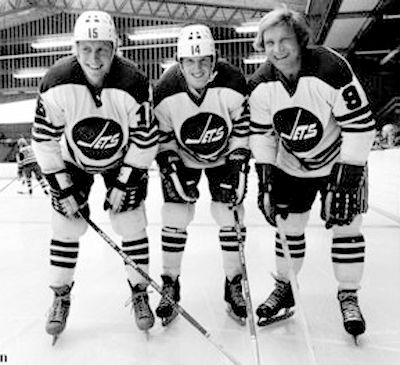
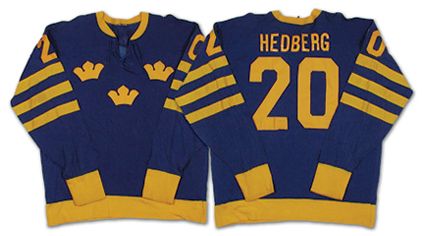
photo courtesy of Classic Auctions
Hedberg made an immediate impression with 12 goals and 18 points in 24 games in 1967-68. He also made his first of many appearances for Sweden when he played in the European Junior Championships in 1968 with 7 points in 5 games.
His second season with MoDo saw his confidence grow as he topped the point per game mark with 23 points in 19 games. He also scored 5 goals in 5 games in the 1969 European Juniors on his way to being named Swedish Junior Player of the Year for 1969.
He repeated as Swedish Junior Player of the Year in 1970 after 24 points in 14 games for MoDo and 6 goals in 5 games during his third consecutive European Juniors. He was also named to the senior Sweden National Team for the World Championships in 1970, where he scored 5 points in 9 games while just having turned 19.
After two more seasons with MoDo and another World Championshps in 1973, Hedberg moved to Djurgardens IF in Stockholm for the 1973-74 season and what would prove to be his final appearance for some time with the national team at the 1974 World Championships where he again impressed with 7 goals and 10 points in 10 games.
It's at this point that the words "typical" and "usual" get thrown out the window, as over in North America the hockey landscape was undergoing a revolutionary war between the established, if not staid, National Hockey League and the upstart World Hockey Association, which had made a splash in 1972 by singing Chicago Black Hawks star Bobby Hull for $1 million to play for the Winnipeg Jets.
With the two leagues competing for players to fill 14 WHA and 18 NHL rosters, up from just 14 NHL teams in 1971-72 before the arrival of the WHA, teams now began to look beyond the borders of North America for really the first time. There had been the odd cases of players born in Europe who migrated to Canada in their youth, and even some Europeans who had brief stays in the NHL, Europeans were generally regarded as inferior players who were not tough enough to survive in the NHL.
That stereotype began to fade in 1973 with the arrival in Toronto of left wing Inge Hammarstrom and even more so defenseman Borje Salming, who would go on to play 17 seasons in the NHL. Hammarstrom would play in six NHL seasons and score a high of 24 goals and 43 points, but did not set the world on fire.
It was at this point that the Jets would look to Sweden and sign not only Hedberg, but fellow Swede Ulf Nilsson and team them up with Hull.
The result was simply the most dynamic line in the history of the WHA.

The trio would light up scoreboards all over the league, with each player reaching 100 points with Hedberg's 100 coming on 53 goals and 47 assists in 65 games which was good for seventh overall in the league and WHA Rookie of the Year honors.
1975-76 would again see the trio of Hull (53 goals, 123 points), Nilsson (114 pts.) and Hedberg (105 pts.) all top 100 points and the Jets improve 25 points in the standings to capture the Canadian Division title. Once in the playoffs, the Jets would sweep the Edmonton Oilers in 4, oust the Calgary Cowboys in 5 and sweep the Aeros in 4 to capture their first WHA championship and the Avco World Trophy as the line combined for 32 goals and 65 points in 13 games.
Hedberg was again chosen as a member of the Swedish National Team, this time for the inaugural Canada Cup in the fall of 1976, scoring 5 points in 5 games.
While Hull was limited to just 34 games of the 1976-77 regular season Hedberg stepped up and led the team with a career high 131 points which saw him finish second overall in the league, which he led with 70 goals. The Jets returned to the finals to defend their title but lost in seven games to the Quebec Nordiques.
Hedberg was fourth in WHA scoring in 1977-78 with 122 points and second on the Jets behind Nilsson. His 63 goals were first on the Jets and second in the WHA. He also led the Jets in playoff scoring with 15 points in 9 games as the Jets again captured the league championship.
The line of Hull, Hedberg & Nilsson celebrate their championship
With their contracts having expired and the WHA on the ropes, down to just seven teams from 14 three seasons earlier, Hedberg and Nilsson signed with the New York Rangers of the rival NHL for the 1978-79 season.
While Hedberg would never reach the scoring heights he achieved with Winnipeg, he was a regular 30 goal scorer while a member of the Rangers, hitting 30 or more four times, 25 once and 20 in his final season, in which he was limited to 64 games. Following his final NHL season of 1984-85, Hedberg was named the winner of the Masterton Trophy for perseverance, sportsmanship and dedication to ice hockey.
He also was a member of the NHL All-Star Team in the 1979 Challenge Cup against the Soviet National Team.
While his obligations to the Jets and Rangers during the spring playoff season prevented him from ever taking part in the World Championships for Sweden after coming to play in North America, Hedberg was able to get one final chance to play for Sweden in the 1981 Canada Cup, held in the fall prior to the start of the NHL season, where he scored 6 points in 5 games in his final international appearance.
In 1997, Hedberg was inducted into the International Ice Hockey Federation Hall of Fame.
Today's featured jersey is a 1975-76 Winnipeg Jets Anders Hedberg jersey. The Jets were a founding member of the WHA and adopted this jersey style for their second season of 1973-74, which they would wear for the remainder of their time in the WHA. The Jets would adopt a new style jersey for the 1979-80 season, their first as a member of the NHL.
During this particular season the Jets wore a patch on each shoulder commemorating Canada's hosting of the 1976 Summer Olympics in Montreal. While the Montreal Canadiens of the NHL understandably wore the patch, Toronto, Quebec, Edmonton and Calgary of the WHA and Toronto and Vancouver of the NHL did not, leaving us to wonder why the patriotism and support of Montreal's Olympic Games from the Winnipeg club and none of their other fellow Canadians?
Another surprising element of this jersey is the crudely shaped numbers on the back, which look as if they may have been hand cut, a far cry from today's uniformly identical machine cut twill numbers.
Bonus jersey: Today's bonus jersey is a 1976 Sweden National Team Anders Hedberg jersey from the 1976 Canada Cup, which features the traditional three crowns cresting, known as the "Tre Kroner".
In all, Hedberg competed for Sweden on seven occasions, resulting in 30 goals and 51 points in 54 games.

photo courtesy of Classic Auctions
In today's video section, Hedberg scores his 50th goal of the season in 1977.
Labels:
Hedberg Anders,
Winnipeg Jets
Tuesday, February 24, 2015
1980 United States National Team Mike Eruzione Jersey
While everyone recalls the "Miracle on Ice" from February 22, 1980, many do not recall that the United States' victory over the Soviet Union was not the gold medal winning game.
With Finland leading 2-1 after two periods, a furious US head coach Herb Brooks warned the team during the final intermission that "If you lose this game, you will take it to your f***ing grave." He then walked almost all the way out of the room before turning around and repating "To your f***king grave."
"He didn't have to say much more than that. We knew he was right," USA forward Mark Johnson recalled.
Properly motivated, just over two minutes into the third period USA defenseman Dave Christian skated from his own zone into the Finnish end, drew the defense toward him and passed to left wing Phil Verchota who fired a wrist shot just inside the right post to tie the game at 2-2 at 2:25.
In fact, the tournament format in 1980 did not even have a gold medal final, as the teams were not placed in a single elimination bracket, as is the case with the Olympics and World Championships of today. Back in 1980, the format had the top two teams from both the Blue and Red Divisions of First Round group play then placed into a new four team Final Round group.
Once placed in the Final Round group, each advancing team was scheduled to play the two surviving teams from the opposite group, with their earlier game against the team advancing from their First Round group carrying over into the Final Round standings.
What this meant for the United States in 1980 was their tournament opening tie against Sweden carried over to the Final Round, as did the Soviet Union's 4-2 win over Finland. This meant the standings heading into the final four matches stood at;
- Soviet Union 2 pts
- Sweden 1 pt.
- United States 1 pt.
- Finland 0 pts.
The United States first game was their historic matchup with the Soviets, which they famously won 4-3 and later was named the Top Story of the Century by the International Ice Hockey Federation, only it guaranteed the United States absolutely nothing.
Fortunately for the United States, nordic rivals Finland and Sweden tied in their game the evening of the 22nd, (yes, the United States game versus the Soviet Union was not even in prime time on US television despite the game being played in the United States!) and the standings prior to the final two games on this date in 1980 were now:
- United States 3 pts.
- Sweden 2 pts.
- Soviet Union 2 pts
- Finland 1 pt.
Heading into the final two games on Sunday, the worst case scenario for the United States was if Finland were to defeat them by two goals while Sweden and the Soviet Union tied, the gold would go to the Soviet Union and the United States would drop out of the medals altogether since all four teams would have the same 3 points with the USA having the worst goal differential!
Still, the victory over the Soviet Union left the United States with their fate in their own hands, as a victory over Finland would elevate them to an unreachable 5 points and earn them the coveted gold medal. Oddly, the USA was scheduled to play at 11AM in Lake Placid.
Unfortunately for the United States, Jukka Porvari got Finland out on top with the first goal of the game at 9:20 of the first period with a one-timer slapshot over USA netminder Jim Craig's glove. The period would end with the USA leading 14-7 in shots on goal, but trailing on the scoreboard 1-0, the sixth time in seven games they had fallen behind.
The United States evened the score at 4:39 of the second period on Steve Christoff's unassisted goal on a backhander that went through Finnish goaltender Jorma Valtonen's pads only to have Finland regain the lead at 2-1 less than two minutes later when Mikko Leinonen put a second shot past Craig at 6:30 on the power play.
Once again, the United States held the edge in shots on goal at 8-6, but had just twenty minutes to get out of the hole they found themselves in against a team that had never won a medal, nor beaten the United States in Olympic hockey.
Once again, the United States held the edge in shots on goal at 8-6, but had just twenty minutes to get out of the hole they found themselves in against a team that had never won a medal, nor beaten the United States in Olympic hockey.
The United States still had to face Finland before claiming the gold medal
With Finland leading 2-1 after two periods, a furious US head coach Herb Brooks warned the team during the final intermission that "If you lose this game, you will take it to your f***ing grave." He then walked almost all the way out of the room before turning around and repating "To your f***king grave."
"He didn't have to say much more than that. We knew he was right," USA forward Mark Johnson recalled.
Properly motivated, just over two minutes into the third period USA defenseman Dave Christian skated from his own zone into the Finnish end, drew the defense toward him and passed to left wing Phil Verchota who fired a wrist shot just inside the right post to tie the game at 2-2 at 2:25.
Less than four minutes later the United States struck again when Johnson, behind the Finland goal, passed the puck to Rob McClanahan, who saw Valtonen start to go down put the puck in between his gaping legs for a 3-2 lead for the USA at 6:05, sending the arena into bedlam, as loud as it had been against the Soviets two days earlier, as the United States led for the first time all game.
Before the United States could relax, Neal Broten took a hooking penalty at 6:48 followed by Christian's tripping penalty at 8:54. The USA successfully killed off both penalties only to have Verchota whistled for roughing at 15:45 with the game still in doubt.
With both Broten and Christoff keeping Finland in their own zone during the power play, the puck was shot out toward the blueline, where it was intercepted by Johnson, who skated in, beat a defender, and made a backhand attempt, which Valtonen saved. The rebound however, went right back to Johnson who quickly smacked the puck over Valtonen's right skate for a shorthanded goal to give the United States a 4-2 lead with 3:35 left to play.
Johnson celebrates his goal with Christoff
The Americans were now on a roll with their ultimate goal in sight and kept up the pressure, nearly scoring twice more on one shot that hit the pipe and another off the crossbar. Finally time ran out and the United States had secured their gold medal in a game many do not even remember, especially given the attention history has focused on the game against the Soviet Union and the "two days later the miracle was made complete" treatment it received in the movie "Miracle" - all of five seconds of game footage.
The final buzzer set off a new round of celebrations, as the United States successfully completed not just a seven game tournament, but a journey that began months earlier, as Brooks transformed them from rival college kids into Olympic champions.
The final buzzer set off a new round of celebrations, as the United States successfully completed not just a seven game tournament, but a journey that began months earlier, as Brooks transformed them from rival college kids into Olympic champions.
Still, somewhat unbelievably, there was another game left to play on the schedule between the Soviet Union and Sweden at 2:30PM. Following the Soviet's demolition of Sweden 9-2, the final placings were now set and the medal ceremony could take place on the ice with Sweden still wearing their jerseys from their game.
Following the presentation of the medals and the playing of the Star Spangled Banner, team captain Mike Eruzione famously called the rest of the team up onto the top level of the victory podium, which miraculously was just large enough, barely, to hold each and every member of the team.
Today's featured jersey is a 1980 United States National Team Mike Eruzione jersey, the actual jersey worn in the gold medal clinching game against Finland on the final day of the 1980 Olympic tournament, the sixth time the United States had come from behind during their seven games of the 1980 Olympics.
The blue jerseys are the lesser known jerseys from the tournament, as it was the white ones they were wearing when they defeated the Soviet Union and the style which has been much more heavily marketed since then.
The blue jersey Eruzione wore during the Miracle on Ice game sold in 2013 for $286,800 when put up for auction along with his white jersey from the Miracle on Ice game against the Soviet Union (which sold for $657,250), his stick, gloves, pants and warmup suit from the gold medal ceremony.
The blue jersey Eruzione wore during the Miracle on Ice game sold in 2013 for $286,800 when put up for auction along with his white jersey from the Miracle on Ice game against the Soviet Union (which sold for $657,250), his stick, gloves, pants and warmup suit from the gold medal ceremony.
Our video section begins with Rob McClanahan's game winning goal at 6:05 of the third period.
This next clip is the final minute of the game along with the subsequent eruption of joy as the United States completed their gold medal performance. Well, except for coach Brooks, who can be seen leaving the bench with nary a smile at the final horn.
Labels:
1980 Olympics,
Eruzione Mike,
USA
Monday, February 23, 2015
1980 United States Olympic Team "Miracle on Ice" Jerseys
While the vast majority of the jerseys worn by the members of the 1980 United States Olympic Hockey Team remain in the possession of the players, over the last 35 years a number of the jerseys from that historic event have made their way into the marketplace.
The first member of the 1980 United States Olympic Hockey Team to part with either his blue jersey from the gold medal clinching game against Finland or his white jersey from the "Miracle on Ice" game against the Soviet Union, was Mark Wells.
Just a week after Eruzione's jerseys sold, Mark Pavelich's white 1980 jersey was sold on Classic Auctions for $104,328, besting Morrow's example by just under $5,000. With Pavelich avoiding the spotlight in favor of a simpler life in northern Minnesota, it was of little surprise that Pavelich would not be as sentimental about his jersey as many of his teammates, leading to his jersey hitting the auction block sooner rather than later.
The latest "Miracle on Ice" jersey to become available in that of Rob McClanahan, the seventh one of any style and just the fifth white "Miracle" jersey. It is currently for sale on Classic Auctions and, as if this writing sits at $22,987 with less than two days remaining in the bidding, which closes at 10 PM eastern on Tuesday evening.
The jersey was consigned to the auction by a member of the 1980 Swedish Olympic Team, who had traded jerseys with McClanahan in Lake Placid - so perhaps McClanahan himself will be able to buy his back!
Aside from the jerseys which have made their way into the marketplace, there are a few other of the 1980 jerseys we have been able to learn are on public display. Mark Johnson's blue away jersey can be seen at the United States Hockey Hall of Fame in Eveleth, Minnesota.
In 2011, it was reported that Dave Christian was embroiled in a dispute with the Hockey Hall of Fame. Dave and his father Bill Christian, a gold medal winner himself in 1960 and the only father and son team to win gold medals in the same sport, were attempting to get their jerseys back, claiming they had loaned their jerseys to the Hall in 1981.
The Hall of Fame meanwhile, claims that the sweaters were donated, and had no intention of returning what they consider to be their property. While lawsuits were threatened, none were ever filed and the Christian's jerseys remain in Toronto.
The only two other jerseys still not in the hands of their original owners are those which belonged to Mike Ramsey. At the conclusion of the Olympics, the team's equipment manager allowed each player to keep all their gear and their equipment bag. Unfortunately, Ramsey's gear bag, which contained both of his jerseys, was stolen in transit during his return to the Minneapolis/St. Paul airport and have never been seen again...
It will be interesting to see what McClanahan's "Miracle" jersey sells for compared to the previous four. Certainly the next big splash would be if goaltender Jim Craig ever decides to take the route of his teammates who have parted with their 1980 Olympic jerseys.
The first member of the 1980 United States Olympic Hockey Team to part with either his blue jersey from the gold medal clinching game against Finland or his white jersey from the "Miracle on Ice" game against the Soviet Union, was Mark Wells.
Of all the players on the team, Wells was the only one to reportedly arrive back to his hometown following the games and not receive a hero's welcome, which personally affected Wells in a way that led to him not placing as much importance on his memorabilia as his other teammates, who were given parades and other accolades upon their return home.
While Wells' teammates held on to both their blue and white jerseys following the Games, Wells gave his blue jersey to a family friend and his white one was put on display in his brother's bar, where it remained on display until 2002. That was when the family friend in possession of the blue jersey ran into some financial difficulty and asked Wells if it would be alright if he sold the jersey. Wells gave his blessing and the jersey was posted for sale on an online message board by his sister, rather than putting it up for auction through ebay or any of a number of high end auction houses which specialize in sports memorabilia.
When an offer was submitted at a price the Wells family was quite pleased, if not surprised with, Mark then agreed to make the white jersey available for the same price as well.
The owner of the white jersey from the Miracle on Ice game became Stu Oxenhorn, who is the director of the MeiGray Vintage part of the MeiGray Group, the leading seller of authenticated game worn NHL, AHL and ECHL jerseys. Stu has displayed his Wells jersey in public, including at the 2004 NHL All-Star Game Fan Fest as well as the annual MeiGray Game Worn Jersey Expo. The blue jersey is in the hands of a different collector.
Mark Wells 1980 USA Miracle on Ice jersey
on display at the 2005 MeiGray Expo
on display at the 2005 MeiGray Expo
Wells, who has been suffering from a rare genetic disease of the spinal cord, also parted with his 1980 Olympic Gold Medal for $40,000 to help offset his medical bills from the five back surgeries he has had to endure, only to see the buyer consign the medal to Heritage Auctions, who then sold Wells' medal for $310,700, and was also the first of the 20 Miracle on Ice medals to ever be offered for public sale. His Olympic ring has also been sold through Heritage Auctions as well.
Mark Wells 1980 Olympic gold medal
"It killed me to sell the medal. Killed me," Wells said to the New York Daily News. "But my life was crumbling. I was going to lose my home. I needed to sell it to have surgery and to live. I had no choice. The medal was a reward - a medal of honor, but really, it's just a commodity. The memories are what's most important. They can't be bought. They can't be sold. They will always be here, and no amount of of money can change that."
It would not be until ten years later that another member of the 1980 US squad would part with one of their jerseys. Then in 2012 Ken Morrow decided to auction his white "Miracle on Ice" jersey through Classic Auctions.
Morrow said he finally decided to look toward the future and begin the process of determining which items he's kept that he wanted to leave to his family and which ones he was willing to part with. The jersey had been taken out to charity events and speaking engagements at schools, but it was otherwise kept on a hanger in his closet and "There's just so many things you can do with that," he said. The jersey finally sold for $104,328 to Barry Meisel of the same MeiGray Group Oxenhorn works for. Of note, Morrow's blue jersey worn against Finland resides in the Hockey Hall of Fame in Toronto.
Read about Morrow's jersey in greater detail here.
Morrow said he finally decided to look toward the future and begin the process of determining which items he's kept that he wanted to leave to his family and which ones he was willing to part with. The jersey had been taken out to charity events and speaking engagements at schools, but it was otherwise kept on a hanger in his closet and "There's just so many things you can do with that," he said. The jersey finally sold for $104,328 to Barry Meisel of the same MeiGray Group Oxenhorn works for. Of note, Morrow's blue jersey worn against Finland resides in the Hockey Hall of Fame in Toronto.
Read about Morrow's jersey in greater detail here.
photo courtesy of Classic Auctions
The sale of both Morrow's jersey, and that of Paul Henderson's 1972 Team Canada jersey, which went for a staggering world record of $1,275,707, caught the attention of the American team captain and Miracle goal scoring hero Mike Eruzione, who decided to help out his adult children after the arrival of a grandchild got him thinking about their future. "I thought this would be a great little nest egg for them for their future with their kids," Eruzione stated prior to the auction. "I'm not desperate for money. It's just easier to divide money between your kids than memorabilia. I wanted to do it when I was young enough to see them enjoy the money. This stuff wasn't doing me any good. It sat in a trunk in the attic for 20 years."
Sensing the time was right, Eruzione then made both is "Miracle on Ice" white jersey, as well as his blue jersey from the Finland game available through Heritage Auctions in 2013.
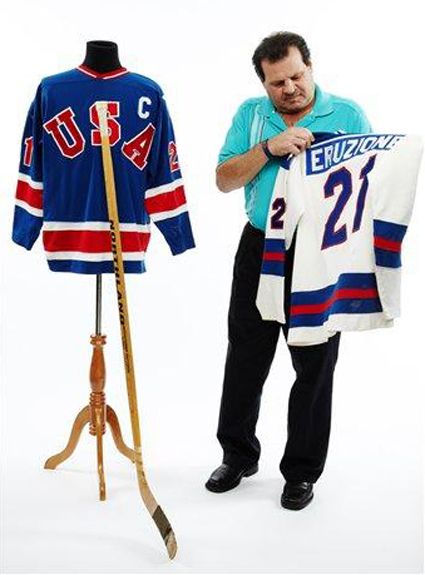
The blue jersey sold for $286,800, while the white one brought in $657,250. While nothing to sneeze at, it was far below the $1,000,000 pre-sale estimated price and far less than Henderson's Summit Series sweater went for despite it being only the third white 1980 USA jersey to become available in 33 years.
Sensing the time was right, Eruzione then made both is "Miracle on Ice" white jersey, as well as his blue jersey from the Finland game available through Heritage Auctions in 2013.

The blue jersey sold for $286,800, while the white one brought in $657,250. While nothing to sneeze at, it was far below the $1,000,000 pre-sale estimated price and far less than Henderson's Summit Series sweater went for despite it being only the third white 1980 USA jersey to become available in 33 years.
Photos from HeritageAuctions.com
photo courtesy of Classic Auctions
The latest "Miracle on Ice" jersey to become available in that of Rob McClanahan, the seventh one of any style and just the fifth white "Miracle" jersey. It is currently for sale on Classic Auctions and, as if this writing sits at $22,987 with less than two days remaining in the bidding, which closes at 10 PM eastern on Tuesday evening.
The jersey was consigned to the auction by a member of the 1980 Swedish Olympic Team, who had traded jerseys with McClanahan in Lake Placid - so perhaps McClanahan himself will be able to buy his back!
photos courtesy of Classic Auctions
photo by Kyle Oen of VintageMinnesotaHockey.com
In 2011, it was reported that Dave Christian was embroiled in a dispute with the Hockey Hall of Fame. Dave and his father Bill Christian, a gold medal winner himself in 1960 and the only father and son team to win gold medals in the same sport, were attempting to get their jerseys back, claiming they had loaned their jerseys to the Hall in 1981.
The Hall of Fame meanwhile, claims that the sweaters were donated, and had no intention of returning what they consider to be their property. While lawsuits were threatened, none were ever filed and the Christian's jerseys remain in Toronto.
Dave Christian's 1980 jersey on display at
the Hockey Hall of Fame in Toronto
It will be interesting to see what McClanahan's "Miracle" jersey sells for compared to the previous four. Certainly the next big splash would be if goaltender Jim Craig ever decides to take the route of his teammates who have parted with their 1980 Olympic jerseys.
If you would like to purchase the most accurate 1980 "Miracle on Ice" jersey available, we recommend the one sold by VintageMinnesotaHockey.com, which was made using measurements form an actual Norcon jersey, the suppliers to the 1980 United States Olympic Hockey Team.
Subscribe to:
Comments (Atom)

